Underground Cities Around the World – Myths and Reality
Underground structures, and sometimes even entire cities, have always been part of myths and religions around the world. While a few of these have been discovered, most of them have not. Alongside these stories about underground cities, there are also tales of underground networks and tunnels connecting different locations, or even countries, sometimes extending for many miles.
In this article we will explore some of the myths and legends that refer to underground cities and tunnels from a variety of cultures. We will also touch on information uncovered by archaeologists and researchers, and how these findings may be connected to such stories. These tales of mythical underground cities have captured the imagination of generations of history enthusiasts.
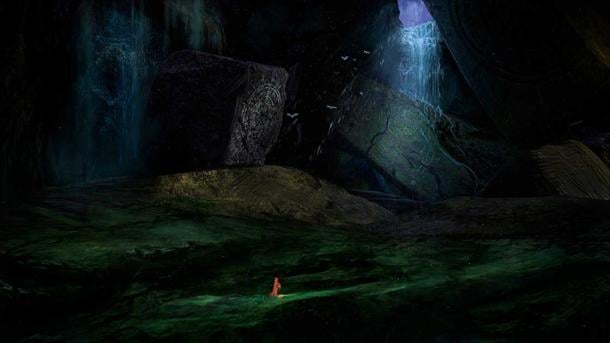
In a variety of myths and legends from different cultures, underground cities, caves and tunnels are often the entrances into the underworld. (Dominick / Adobe Stock)
Underground Networks and Cities in Myths and Legends
According to mythological traditions across the globe, underground sites were mostly referred to as entrances to the underworld. Although most of us think of the underworld as a representation of hell and therefore an imaginary or spiritual setting for so-called “bad” people, within ancient religions this wasn’t always the case.
- Home to 20,000, But Who Built it? The Underground City of Derinkuyu
- Journeys to the Underworld – From Ancient Greece to Hollywood
The dead would travel to the underworld, a place which had physical entrances, guards, buildings and cities. Few mortals would visit or even communicate with the dead souls, gods, kings or the armies of the underworld. In a few cases though, according to the legends, they could even resurrect a dead person.
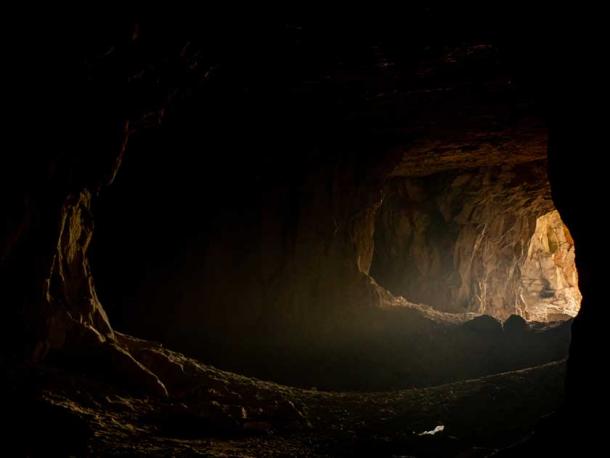
The concept of tunnels and caves leading to the underworld or underground cities has pervaded the myths of cultures around the world. (vladimir / Adobe Stock)
Realms of the Underworld: Underground Cities in Ancient Mythology
One of the most famous mythical underground cities is the city of Agartha, a legendary city that was said to be in the center of the Earth, the Earth’s Core. Central Asia is the origin of the legends of Agartha and the race inhabiting this underground realm was called the Agharti. Theosophists refer to Agartha as a vast complex of caves and an underground network that was inhabited by the Asuras (evil demons) and enemies of the Gods. This underground network was supposedly made by man.
In Hindu mythology there are legends of a race called the Nagas, intelligent serpent-like creatures with human faces said to live in underground caverns. The Nagas are described as “children of Gods” – immortal and able to fly - who got married with human kings and queens and supposedly spiritually advanced.
Similarly, within Chinese legends dragons were not the ugly flying beasts as we know them today, but rather wise creatures that would be mentors of kings and creators of kingdoms. Tibetan legends speak of people entering the caves of the Naga, said to have been part of a network running for many miles within the mountains of Asia.
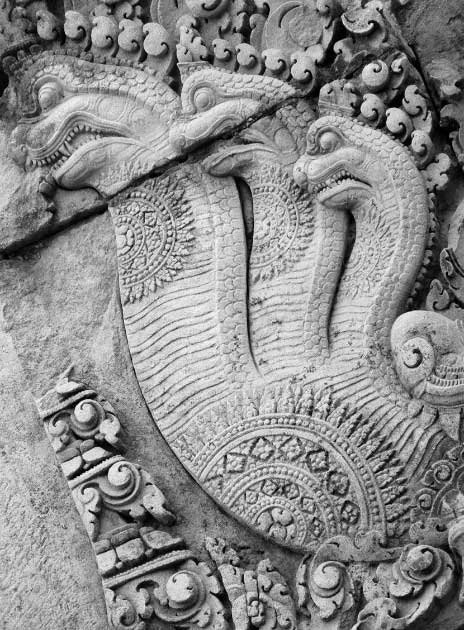
Cambodian depiction of an ancient Naga creature from the underworld. (yeowatzup / CC BY 2.0)
What is interesting is that a strange light emanates in those underground realms which has also been mentioned as the hollow earth inner sun. So within these mythical tales, underground cities are not in dark one would imagine. Some of these underworlds are believed to be found within the Earth, although in the past they were located on its surface. Legends have it that they were forced to move underground due to extreme circumstances such as attacks, or maybe even climate change.
Shambhala (a Sanskrit word meaning “place of peace”) is another famous holy place that some beliefs hold to be a spiritual paradise. Others however believe Shambhala is a real underground city and throughout history there are stories of people actually visiting it.
Legends mention that the King of Shambhala travelled to Indi to meet the Buddha and listen to his teachings. One major difference between Agartha and Shambhala is that the first is remembered as a place of demons, while Shambhala is described as a holy city. According to Helena Blavatsky, Shambhala is located in the Gobi Desert.
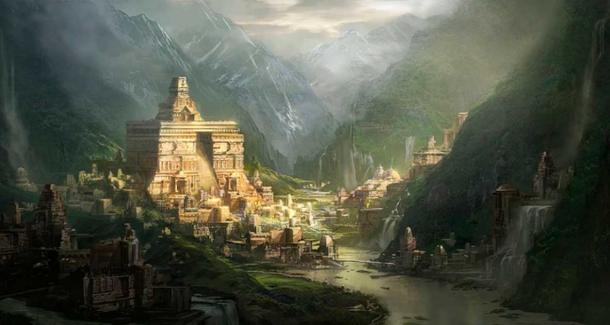
An artist’s depiction of Shambhala. (Naughty Dog-Uncharted)
American Legends of Underground Cities
On the other side of Earth, we have the American legend of Akakor, a tale which inspired the 2008 adventure movie Indiana Jones and the Crystal Skull. In Chronicle of Akakor Tatunca Nara, an Amazon jungle guide, claimed to have seen the city and described not only the city but also the chronicles of the underground kingdom.
According to the Akakor legends, “Gods” came from a solar system known as Schwerta and built an underground tunnel system in South America. This civilization left 13 underground cities in South America in the jungles of Amazon, none of which have been found so far.
In Maya mythology we have the mythical underground city of Xibalba, “the land that the sun goes down into” which was inhabited by superheroes and Gods, a civilization that supposedly vanished around the Middle Ages. The entrance to this world was thought to be located in Guatemala and description of the structures and locations within Xibalba are described in Popol Vuh, the Quiche Maya story of creation.
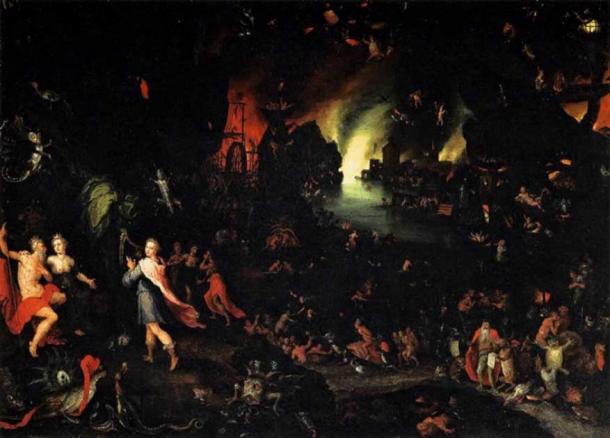
Orpheus in the Underworld, from the story of Orpheus visiting Pluto, aka Hades, the god of the underworld in order to bring back his bride Eurydice. Painting by Jan Brueghel the Elder. (Public domain)
European Mythology and Tales of Underground Cities
Back in Greece, we have the myths of Hades and the underworld, a realm where gods and heroes lived. Within Greek mythology, Pluto (aka Hades) was god of the underworld, with the afterlife divided into different sections including Elysium and Tartarus. Norwegian legends speak of dwarves, beings of the underground associated with craftsmanship. The different races of dwarves were believed to supply the Gods with weapons.
Irish legends also speak of the underworld with their stories of the people named Tuatha De Danaan (People of the Goddess Danu), a race who moved underground when a rival people arrived on the island. According to the legends, they came to Ireland in “dark clouds” and landed on the mountains of Ireland. These days the Tuatha De Danaan are referred to as fairies. One Irish poem describes them in the following manner:
It is God who suffered them, though He restrained them
they landed with horror, with lofty deed,
in their cloud of mighty combat of specters,
upon a mountain of Conmaicne of Connacht.
Without distinction to discerning Ireland,
Without ships, a ruthless course
the truth was not known beneath the sky of stars,
whether they were of heaven or of earth.
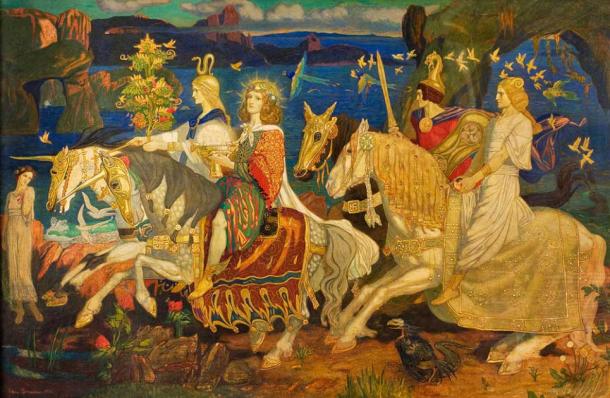
Irish legends tell of the Tuatha De Danaan, a supernatural race believed to live underground in the Otherworld. (Sevenseaocean / CC BY-SA 4.0)
Further Accounts of Underground Realms
In Egypt, the historians Herodotus and Strabo recounted tales of a colossal underground temple that contained 3,000 rooms full of paintings and hieroglyphs, a lost labyrinth which has yet to be found. Meanwhile, in modern times, stories of people accessing this underground realm continue to proliferate.
Archival evidence seems to point to Hitler and the Nazis having discovered an entrance to the center of the Earth in Antarctica. The Nazi’s disseminated claims of a civilization of superhumans living inside the Earth. Even today, some people continue to believe that the Nazi’s were in contact with them, directing them and even sharing technology with them. While there is no proof of that kind of contact, we definitely know that during World War II the Nazi’s possessed cutting edge technology which often surpassed that of their enemies.
- The Ancient Subterranean City of Nushabad: Why Were People Living Underground?
- Crime and Punishment: Eternal Damnations as Handed Down by the Ancient Greek Gods
The concept of the Hollow Earth is a popular, though disproved, concept popular in the realms of pseudoscience. It has also been used within subterranean fiction novels in books such as At the Earth’s Core by Edgar Rice Borroughs, A Journey to the Center of the Earth by Jules Verne or Message found in a Bottle by Edgar Allen Poe.
Stories of vast underground cities, realms and networks inhabited by god-like beings more advanced and more intelligent than the current humanity are intriguing. You can continue reading about them in Part 2 of this article, which covers some of the discoveries of vast underground networks which have been uncovered to date.
Top image: The mythology of cultures around the world is filled with tales of underground cities and caves. Image of the underground city of Cappadocia in Turkey. Source: Wirestock Creators / Adobe Stock
By Joanna Gillan
References
Admin. No date. “Lost Crusader Tunnels Discovered in Malta” in Mysteries24.com. Available at: https://mysteries24.com/n3-5110-Lost_Crusader_tunnels_discovered_in_Malta
Baker, A. No date. “The Phantom Kingdom: The Nazi-Tibet Connection” in Biblioteca Pleyades. Available at: https://www.bibliotecapleyades.net/sociopolitica/sociopol_buddhism01.htm
Bonwick, J. 1894. “Irish Magic, and Tuatha De Danaans” in SacredTexts. Available at: https://www.bibliotecapleyades.net/ciencia/ciencia_tuathadedanaan08.htm
Bushby, T. 2004. “The Underground Labyrinth of Egypt: Lost History of the Pyramids” in Nexus Magazine. Available at: https://www.bibliotecapleyades.net/piramides/esp_piramide_23.htm
Eye of the Psychic. No date. “The Legend of Akakor” in Eye of the Psychic. Available at: https://www.eyeofthepsychic.com/akahim/
No name. No date. “The Twin Heroes and the Lords of Xibalba” in Internet Sacred Text Archive. Available at: https://www.sacred-texts.com/etc/omw/omw81.htm
No name. No date. “The Nagas” in Biblioteca Pleyades. Available at: https://www.bibliotecapleyades.net/sumer_anunnaki/reptiles/reptiles15.htm
No name. No date. “Agartha” in Token Rock. Available at: https://www.tokenrock.com/subjects/agartha/
No name. No date. “Shambahla” in Biblioteca Pleyades. Available at: https://www.bibliotecapleyades.net/esp_sociopol_shambahla.htm


















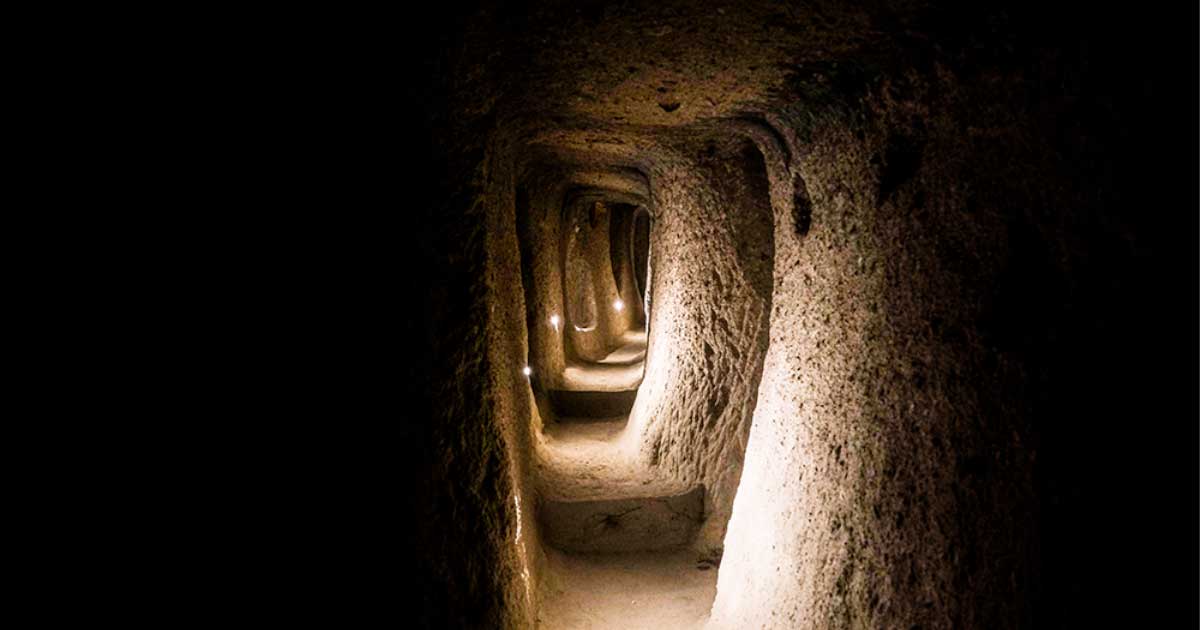

Comments
What ancient texts talk about the construction of them?
Nobody gets paid to tell the truth.
There are two worlds or dimensions on the Earth, the "upper (northern) world and the lower (southern) underworld", which simply are dividing the Earth hemispheres.
When the Underworld is mentioned in myths, this does not dela with any holes or caves in the Earth, but it deals with the celestial realms of the southern hemisphere.
Here we find the southern contours of the Milky Way and the Milky Way center from where everything is created in our galaxy. This center of formation is mythically called "the cosmic womb" and this Milky Way southernly contours is mythically imagined as both a celestial Cow and a huge celestial Woman in the Sky.
As a center of creation our galaxy is sort of a hollow structure because of its spherical electromagnetic currents and magnetic circuits and as such the very center can be mytho-cosmologically described as a womb or a cosmic cave which was duplicated and made by humans on Earth as a ritual structure in order to gain cosmic knowledge of the creation.
I don´t think there is a hollow Earth, but it seems that the myts of creation and the mythical division of the worlds is misunderstood and misconcepted. The Underworld is not a hole in the Earth but a cosmic hole in the Milky Way galaxy.
Regards
Ivar Nielsen
http://www.native-science.net
"... we definitely know that the Nazi’s had the most advanced technology than any other country of the world during World War II."
The allies were already working on things like jet engines and the atom bomb at the same time that Germany was looking at these same things. Their advanced technology was only years or even months ahead of the allies' technology. There's no need to infer that ancient aliens might have been passing info to the Germans. It was all well within reach of the human scientists and engineers of that time.
Love this... I recently read about Cappadocia in Anatolia, Turkey in an article by Robert Schoch. Really stunning. Lots of theories abound but it makes good sense to me that these were possibly constructed by practical people who knew that some kind of cataclysm was coming. Makes me feel deeply sad & also profoundly proud of what our ancestors were able to do...
Love this information. Thank you to you & everyone reading.
Interesting.
archaeologyrocks
Pages